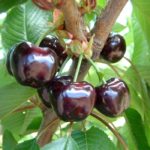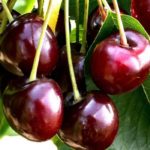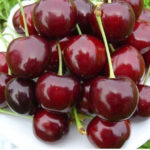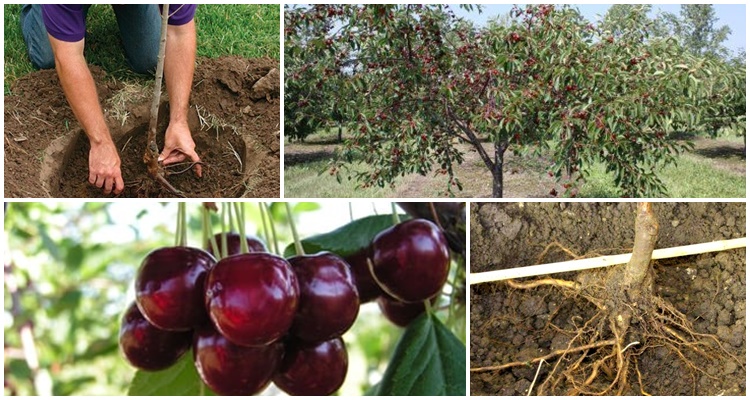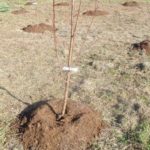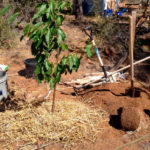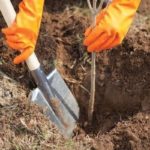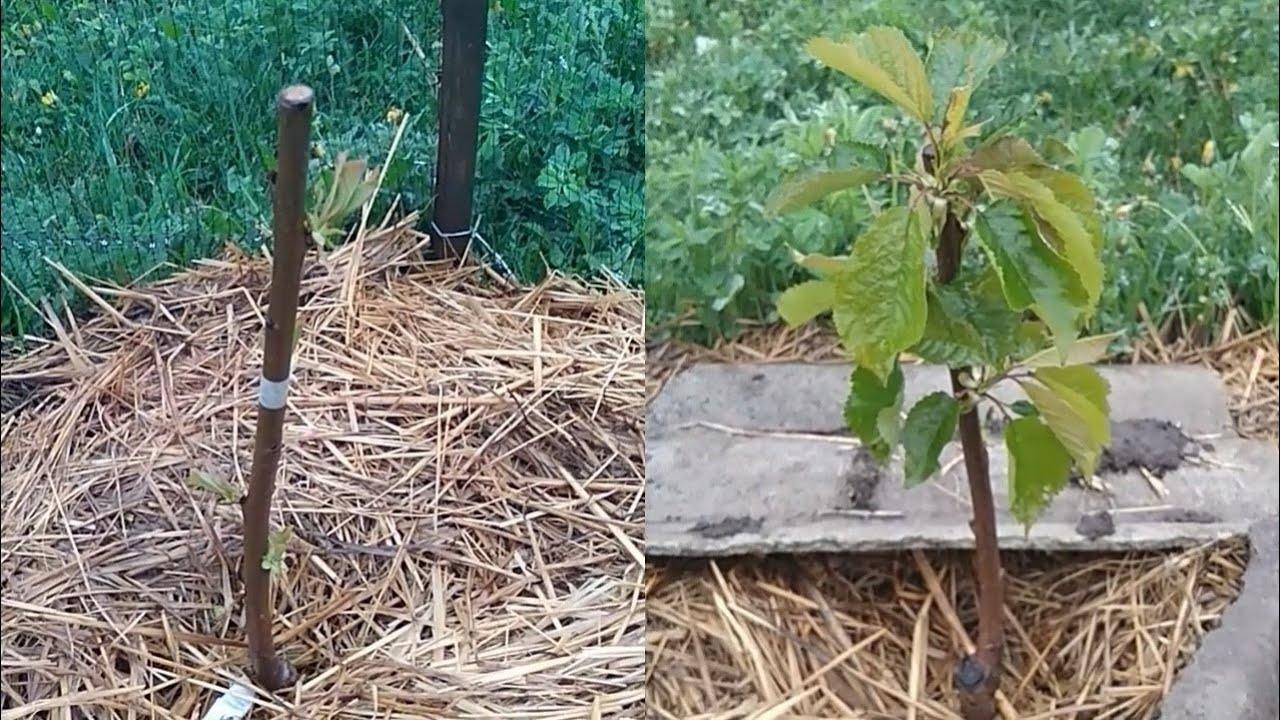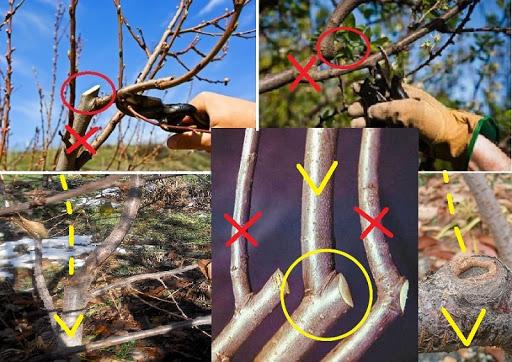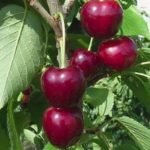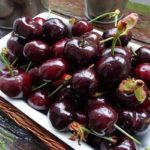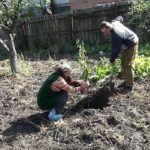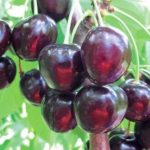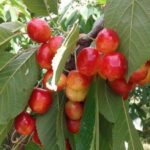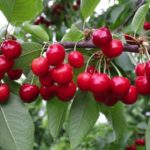Large and juicy berries, one of the first to ripen on the plots of domestic gardeners, are very popular among summer residents. Cherries are not only tasty, but also contain in their pulp many vitamins and microelements necessary for the human body after a cold winter. When planting, gardeners give preference to early varieties, which include Bigarro, a time-tested cherry that has many advantages.
- History of selection
- Description and characteristics of culture
- Positive and negative sides
- Features of planting Bigarro Burlat
- Dates and place of landing
- Preparation of seedlings
- Planting scheme
- Further tree care
- Watering and fertilizers
- Pruning and wintering
- Diseases and pests of the variety
- Harvest and storage
History of selection
A cherry seedling of this variety was accidentally discovered back in 1915 in France. Gradually, thanks to the work of breeders, the crop variety received enhanced characteristics frost resistance, immunity to diseases and improved taste.
European gardeners were the first to pay attention to the Bigarro variety and began cultivating trees on their plots. Cherry seedlings arrived in our latitudes relatively recently and are still being tested in domestic nurseries. But those who have already planted plants in their gardens claim that the trees have many more advantages than disadvantages, and take root and bear fruit in our climate without any problems.
Description and characteristics of culture
The French variety has the following characteristics:
- Tree. The height in adulthood does not exceed 3.5 meters. The cherry tree has a spherical crown and is quite dense. A distinctive feature of trees of this variety is that their bark has a light brown tint. To obtain a rich harvest, it is necessary to plant other varieties nearby for cross-pollination.
- During the flowering period, cherry trees are covered with white, saucer-shaped flowers, their diameter does not exceed 3 cm.
- The fruits of the variety have an average weight of 6 grams, and their skin is dark, almost black.
- The taste of the medium-dense, rich red pulp is harmonious, sweet and sour. The stone is easily separated, and its weight does not exceed 6% of the total weight of the berry. The fruits are used both for fresh consumption and for storing for the winter.
- The frost resistance of the tree is average, the maximum temperature that cherries can withstand is -20 degrees, so in the middle zone the plants need to be insulated. However, Bigarro is resistant to returning spring frosts.
- The berries ripen early; the first harvest begins in early June. The first fruiting begins 4-5 years after the seedling is planted on the site. About 80 kg of berries are harvested from one cherry tree.
- Bigarro has average immunity to crop diseases, so preventive treatments of trees are necessary. If the summer is rainy, cracking of the cherries is observed.
Positive and negative sides
Over the years of growing trees of this variety, gardeners have noticed the advantages and disadvantages of the variety.
Features of planting Bigarro Burlat
In order for a cherry seedling to quickly adapt to a new location, it is necessary to properly prepare the site and carry out planting work.
Dates and place of landing
Acidic soils, as well as peat bogs and infertile soils, are not suitable for cultivating this variety. Cherries cannot be planted on heavy clay soil, as they will not grow and bear fruit there.
The site is selected so that it is illuminated by sunlight most of the day, otherwise the fruits will form small and taste sour. Also pay attention that groundwater does not come closer than 2 meters to the surface of the earth. It is better to choose a place for planting on a small hill, but protected from drafts.
If the gardener lives in the southern region, then it is better to carry out planting work in early autumn; for summer residents in the middle zone, spring is considered a favorable time, in this case the seedling will have time to fully take root before the cold weather arrives.
Preparation of seedlings
When purchasing planting material, pay attention to the fact that the seedling has a graft, it is located just above the root collar. High-quality material has flexible branches and well-developed roots. For several hours, the roots are soaked in a clay mash, adding a growth stimulator for better rooting.
Planting scheme
2-3 weeks before the start of planting work, the pits are prepared. The diameter of the hole is about 1 meter, the width has the same parameter. The selected soil is mixed with nutritional supplements and left.
Planting cherries is carried out according to the following algorithm:
- A tree support is dug into the bottom of the hole.
- Pour in about half the soil and place the seedling on it, straightening the roots along the edges.
- Cover with the remaining soil and lightly press down the soil so that there are no voids.
- A hole is made around the young tree into which watering will be carried out, and it is tied to a support.
- Water the seedling abundantly.
Further tree care
The amount of harvest and the health of the cherries themselves depend on compliance with the rules of care.
Watering and fertilizers
Irrigation is done abundantly; trees especially need moisture at the stage of leaf blossoming, during the formation of fruits and before preparing for winter. If the summer is dry, the soil around the seedlings is moistened once a week. It is not recommended to irrigate trees while the berries are ripening to prevent them from cracking from excess liquid.
Fertilizing begins from the second year of cultivation.Urea, superphosphate and potassium sulfate are used as fertilizers.
Pruning and wintering
In the spring, rejuvenating and sanitary pruning is carried out, removing weak, diseased and frozen branches. It is important to complete the procedure before the kidneys swell.
Diseases and pests of the variety
The main diseases that, in the absence of prevention, affect cherries:
- bacteriosis;
- coccomycosis;
- moniliosis;
- Clusterosporiosis;
- rot;
- powdery mildew.
Insects that damage trees include: cherry fly and cherry moth, sawfly and weevil, and aphid.
Harvest and storage
The harvest begins in early June. Fresh berries do not last long, so they are frozen, canned and juiced.

